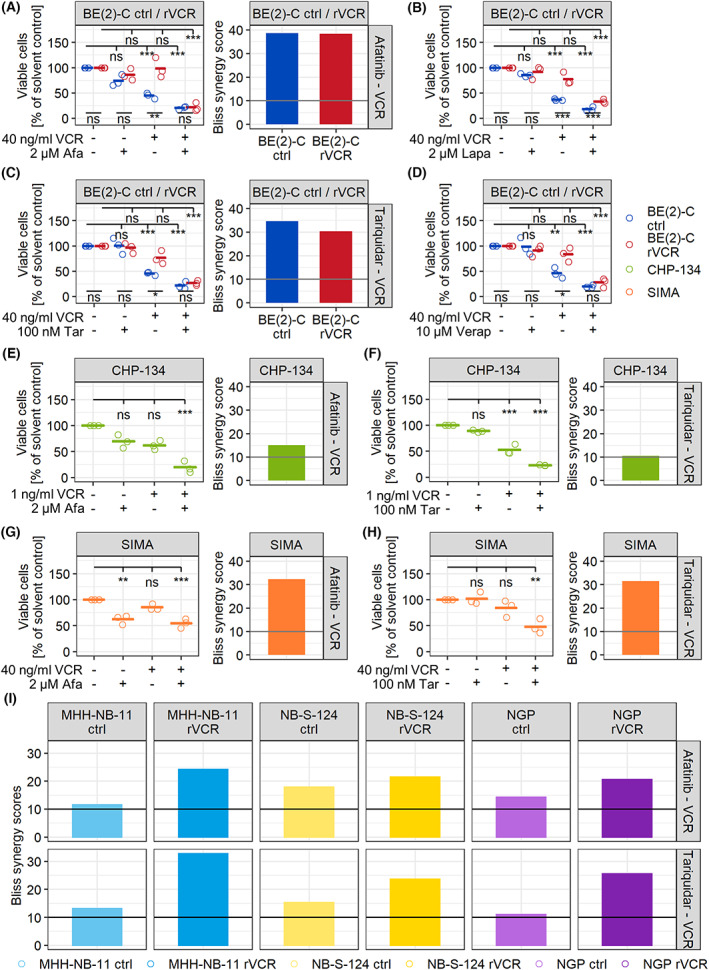Fig. 2
Inhibitors of the ERBB family and P‐gp break resistance in BE(2)‐C rVCR. (A–D) BE(2)‐C control and rVCR cells were treated with 40 ng·mL−1 VCR and the indicated concentrations of the ERBB inhibitors afatinib (A) and lapatinib (B) or the P‐gp inhibitors tariquidar (C) or verapamil (D) for 48 h. (E, F) CHP‐134 cells were treated with 1 ng·mL−1 VCR and 2 μ

